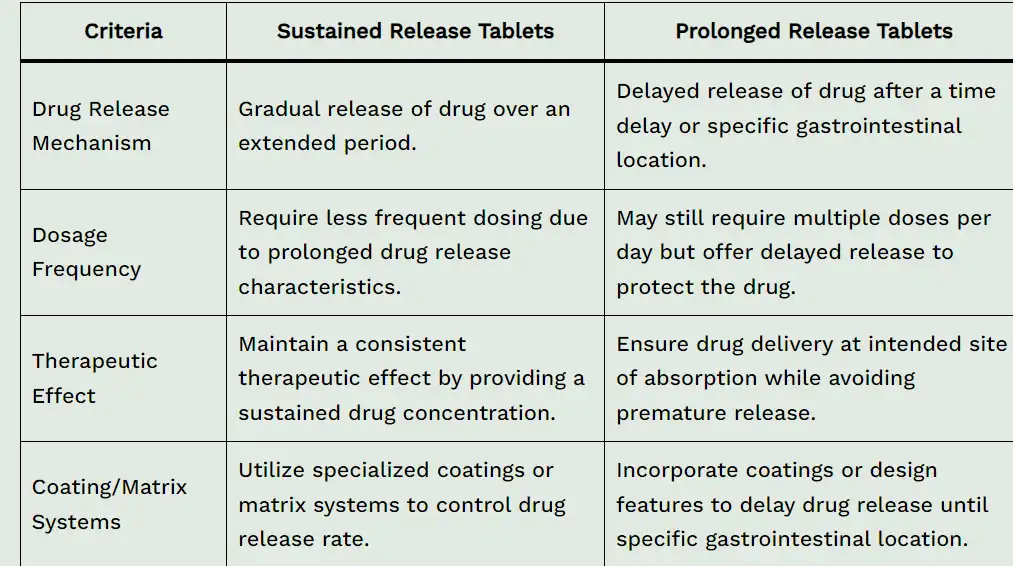Explore differences between sustained release and prolonged release tablet, play a crucial role in controlled and effective drug delivery.

Differences between sustained release and prolonged release
| Criteria | Sustained Release Tablets | Prolonged Release Tablets |
|---|---|---|
| Drug Release Mechanism | Gradual release of drug over an extended period. | Delayed release of drug after a time delay or specific gastrointestinal location. |
| Dosage Frequency | Require less frequent dosing due to prolonged drug release characteristics. | May still require multiple doses per day but offer delayed release to protect the drug. |
| Therapeutic Effect | Maintain a consistent therapeutic effect by providing a sustained drug concentration. | Ensure drug delivery at intended site of absorption while avoiding premature release. |
| Coating/Matrix Systems | Utilize specialized coatings or matrix systems to control drug release rate. | Incorporate coatings or design features to delay drug release until specific gastrointestinal location. |
Sustained Release Tablets: It also known as extended release or controlled release tablets. These are designed to deliver medication slowly and steadily over an extended period. This controlled release mechanism helps maintain a constant therapeutic drug level within the body, resulting in several advantages:
- Reduced Dosage Frequency
- Consistent Therapeutic Effect
- Enhanced Safety and Efficacy
Prolonged Release Tablets: Prolonged release tablets, also known as delayed release tablets. These are formulated to release the active drug substance after a specific time delay or at a particular location within the gastrointestinal tract. Key features and benefits include:
- It Protect the drug from Premature Release
- Optimal Drug Delivery can ensure effective absorption and targeted therapeutic action.
- Flexible Dosing Options feature allows for more convenient dosing schedules.
Also read https://pharmasiksha.com/test-for-the-identification-of-type-of-emulsion/.
